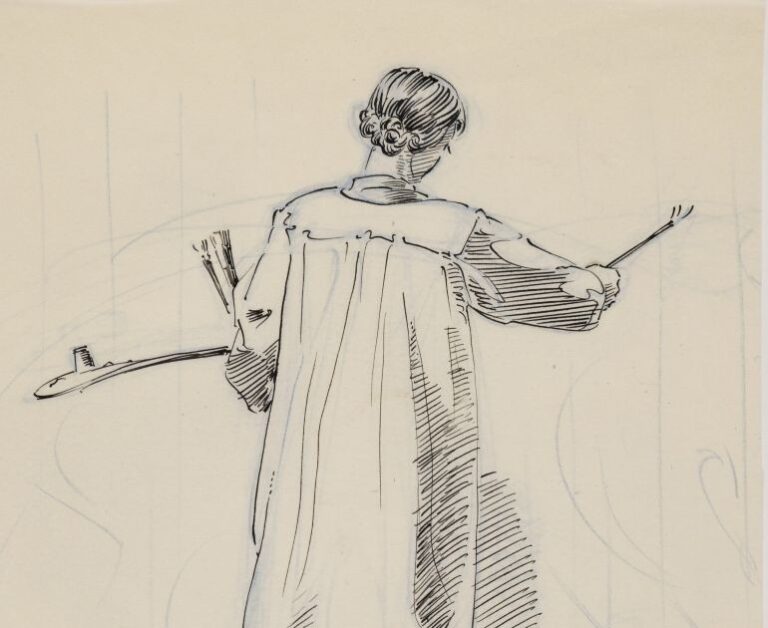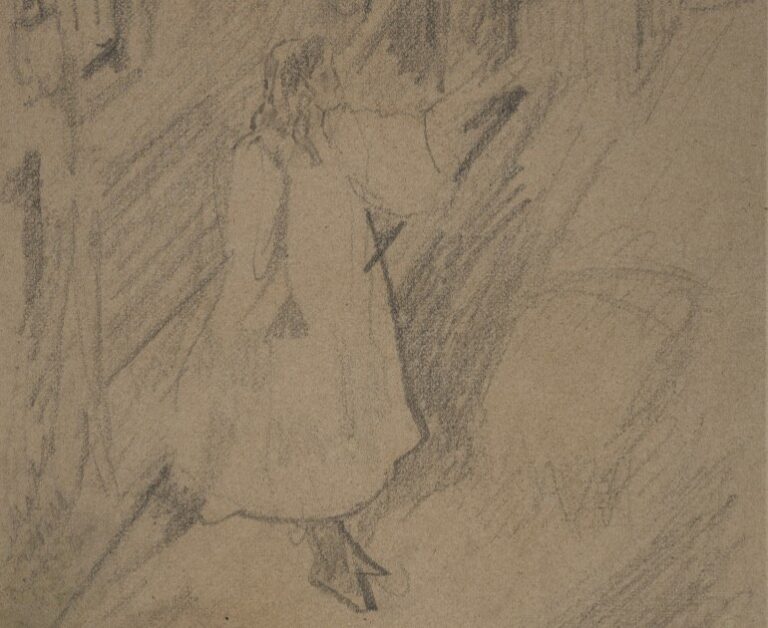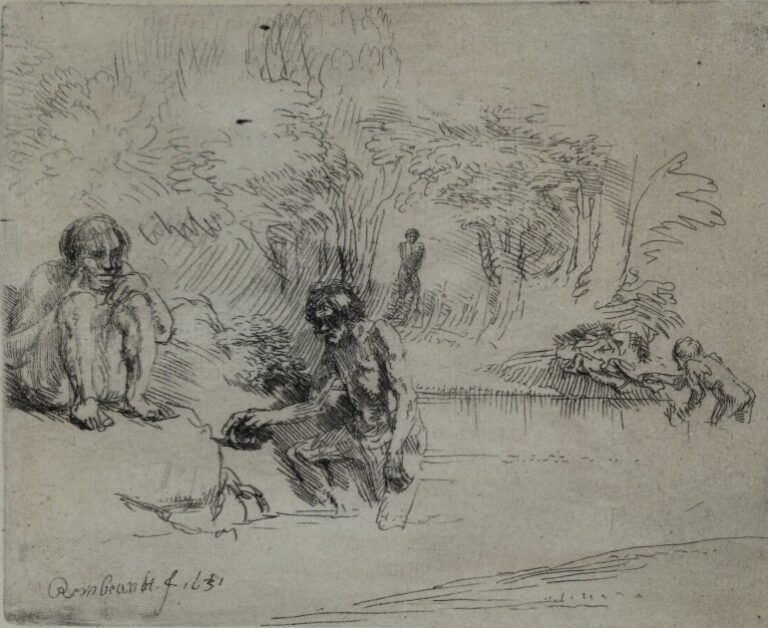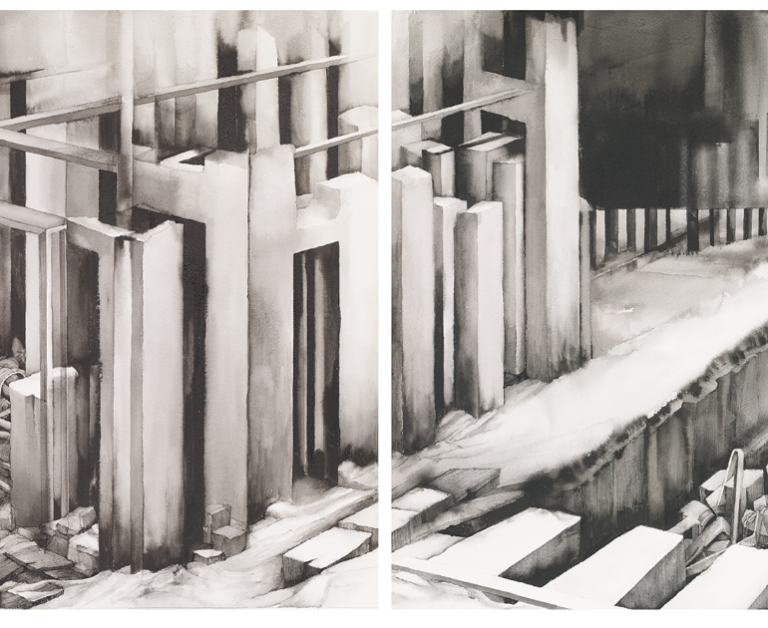Art Collection Deep Dive: Walter Sickert’s The Little Bed
-
Author
- clareplascow
-
Published Date
- October 29, 2025
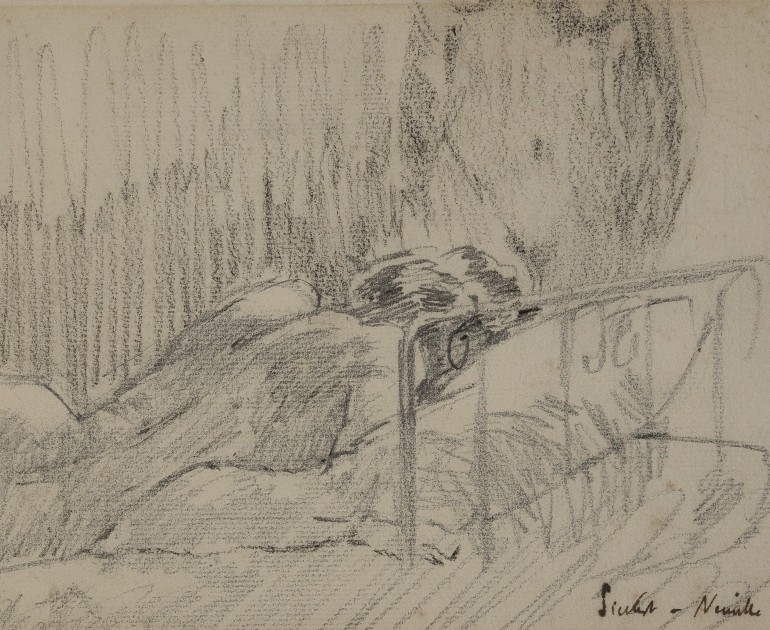
This month, our summer placement student, Caitlin Johnson (BA Museum Studies and Archaeology, 2021-2025), takes a closer look at Walter Sickert’s intriguing drawing —featured in our current exhibition ‘Paint, Pencil, Print: 10 Artworks for 10 Years’.
This drawing is part of The Betts Collection, which is composed of 64 drawings by various Old and Modern Masters. The Collection is named after the academic, Professor James Anthony Betts (1897-1980), who brought together a variety of artworks to accompany his teaching at the University of Reading’s School of Art from 1933-63. Betts’ teaching practice was influenced by the celebrated British artist Walter Sickert (1860-1942). He collected 18 drawings by Sickert, which today form a significant part of the University of Reading Art Collection.
Who was Walter Sickert?
Born in Munich, Sickert emigrated to Britain in 1868 with his family. While he had a year of formal artistic education at the Slade School of Fine Art in London, much of his understanding of artistic principles came from self-taught study. He also made connections with other well-known artists of the day and became an apprentice to James McNeill Whistler (1834-1903). Scholars of Sickert’s work note that during this period, his aesthetic style had much in common with Impressionists such as Edward Degas (1834-1917), whom Sickert met during his influential time in Dieppe, France. However, drawing was not Sickert’s only known form of expression. He started to use oil paints to create sweeping, moody pieces that placed the viewer in close proximity to the subject matter.
The artist Clive Ashwin (b. 1937), a former student of Betts at the University of Reading, states that Sickert’s mischievous sense of humour can be detected in his art. This can be seen in his inclination to have his subjects seem as if they had been ‘seized’ in unbecoming postures rather than elegantly ‘posed.’ Many of Sickert’s subjects were women, and in his 1902 work, The Little Bed, I think that Sickert has ‘seized’ his subject in a raw and complex state.
A closer look at The Little Bed
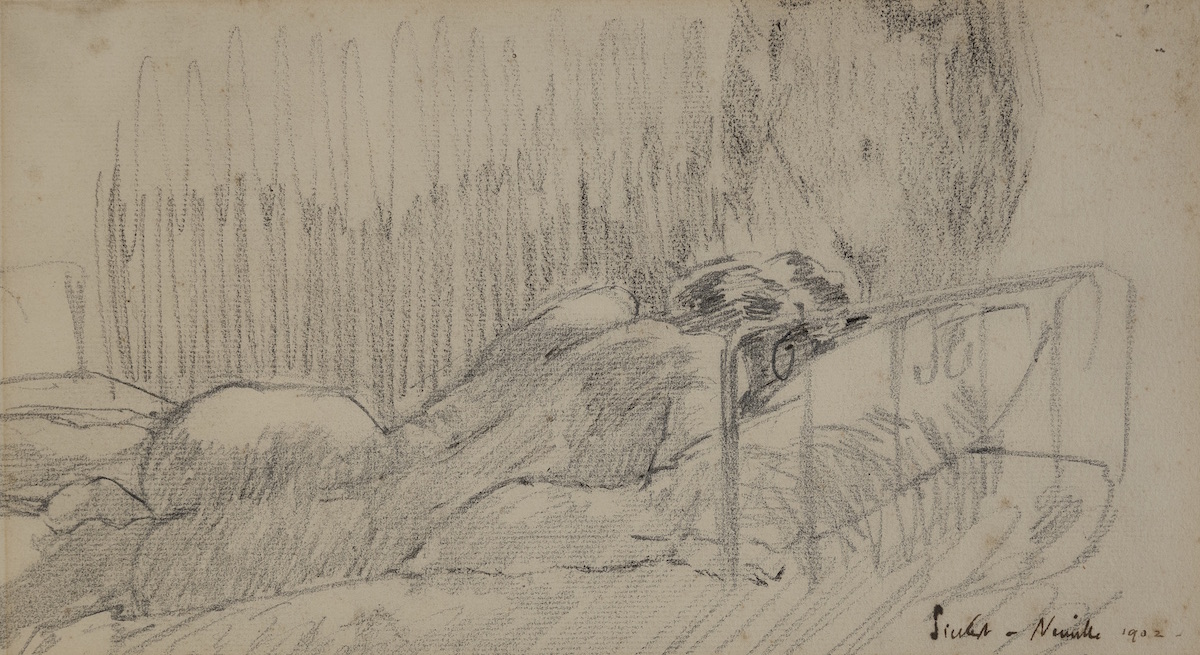
In my opinion there is quite an intrusive intimacy and concern in one’s first viewing of The Little Bed, with the viewer placed in a voyeuristic position. From behind, we observe a young Edwardian woman, who is fully undressed and lying on her iron-framed bed. Sickert’s hasty charcoal and pencil sketch only gives a rough outline of the room that we, the viewers, all occupy. The woman, the sheets, and the bedstead make up the foreground and much of the main composition of the piece. However, if we look further into the back, one can see the delicate outline of another nude woman, who is only depicted from below her breasts to her hips. What exactly is Walter Sickert trying to show his viewers?
Objects rather than individuals?
In much of his work, Sickert attempted to highlight the crude underbelly of nineteenth-century London. However, to me it feels as if Walter Sickert used the degradation and limited freedom non-affluent women had, whether it was social or cultural, to observe them as objects rather than individuals.
Sickert is not shy in using the nude. Much of his work leans heavily on the lone nude female body viewed by an anonymous spectator. We must be mindful that all artists were expected to depict the nude figure – it was a staple of formal art education – and Sickert, like other well-known male artists of the day, also depicted the human body. But what does the viewer gain from seeing these women in such precarious situations? I want to ask, what happened to the woman depicted in these pieces? Who was the woman depicted in The Little Bed? In scholarly literature, this drawing is often admired for its use of line, composition, and subject matter. But even with all of these art-historical accolades, many of these women remain nameless and unappreciated. Is that what Sickert intended?
Reference list
University of Reading Art Collection (2025). The Betts Collection – Art Collections – University of Reading. [online] reading.ac.uk. Available at: https://collections.reading.ac.uk/art-collections/collections/the-betts-collection/ [Accessed 24 Aug. 2025]
Chambers, E. (2022). Walter Sickert. Tate Publishing.
Reading Museum (2021). Rubens to Sickert: The Study of Drawing. University of Reading.
Seligson, J. (2016). Whistler’s Portraits: Ripper, Vampire, or Sickert? – Smithsonian’s National Museum of Asian Art. [online] Smithsonian’s National Museum of Asian Art. Available at: https://asia-archive.si.edu/whistlers-portraits-walter-sickert/ [Accessed 25 Aug. 2025].
Moorby, N. (2012). Walter Richard Sickert 1860–1942. [online] Tate.org.uk. Tate. Available at: https://www.tate.org.uk/art/research-publications/camden-town-group/walter-richard-sickert-r1105345 [Accessed 20 Jul. 2025].
Efland, A. (1983). School Art and Its Social Origins. Studies in Art Education, 24(3), p.149. doi: https://doi.org/10.2307/1319735.
